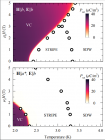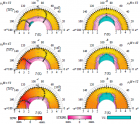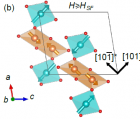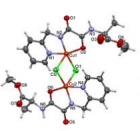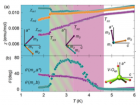This website uses cookies to ensure a better user experience.
To get more information, please read our Cookie Statement.
Scientific project
 | HrZZ - UIP-2014-09-9775Influence of Magnetic Anisotropy on Quantum Spin Systems | |
| project leader | Mirta Herak | |
| associates | Ivana Levatić Martina Dragičević Nikolina Novosel Dijana Žilić (IRB) Zoran Džolić (IRB) | |
| web page | http://imaqss.ifs.hr/ | |
| start date | 01.06.2015. | |
| end date | 15.09.2018. | |
| total ammount | 750.000,00 kn | |
| research areas | Solid state physics |
Abstract
 Study of magnetic materials provides us with understanding of a broad spectrum of physical phenomena and continues to enable the development of important new technologies. Magnetism is a quantum phenomenon emerging from the superexchange interactions between magnetic moments in the material. Understanding how these interactions bring forth a material with specific magnetic properties is one of the key questions in materials science. In low-dimensional quantsum spin systems the interactions between the spins are described by the isotropic Heisenberg Hamiltonian formalism. However, the importance of weak anisotropic interactions emerges from experiments and requires new theoretical treatments. These interactions are found to induce new interesting phenomena, many of which have great potential for applications in emerging technologies. Exploiting new methods and experiments sensitive to these interactions is thus crucial.
Study of magnetic materials provides us with understanding of a broad spectrum of physical phenomena and continues to enable the development of important new technologies. Magnetism is a quantum phenomenon emerging from the superexchange interactions between magnetic moments in the material. Understanding how these interactions bring forth a material with specific magnetic properties is one of the key questions in materials science. In low-dimensional quantsum spin systems the interactions between the spins are described by the isotropic Heisenberg Hamiltonian formalism. However, the importance of weak anisotropic interactions emerges from experiments and requires new theoretical treatments. These interactions are found to induce new interesting phenomena, many of which have great potential for applications in emerging technologies. Exploiting new methods and experiments sensitive to these interactions is thus crucial.
Aim of this project is to experimentally investigate the influence of magnetic anisotropy on quasi-low-dimensional quantum spin systems by combining two highly sensitive techniques: torque magnetometry and electron spin resonance (ESR) spectroscopy. Our investigation is focused on the samples in which magnetism comes from electron spin S=1/2 and which can be classified as quasi low-dimensional spin S=1/2 Heisenberg antiferromagnets. We will study the influence of weak anisotropic interactions on the ground states and low energy excitations of these systems. The combination of mentioned experimental techniques allows a new methodology for investigation of the influence of magnetic anisotropy on quantum spin systems and other magnetic materials. The results will provide important experimental input in understanding of anisotropy induced phenomena in magnetic materials.





